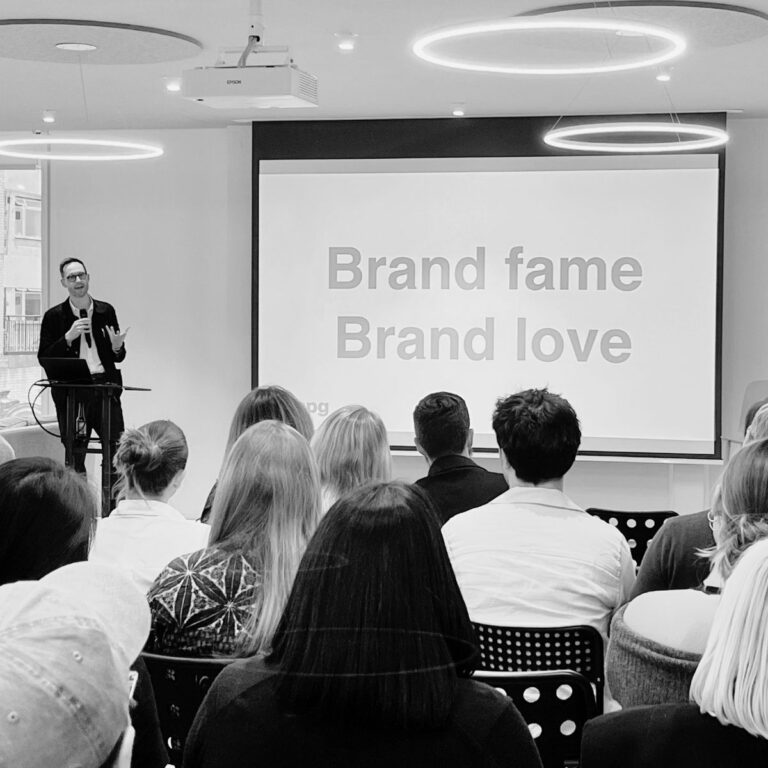
Fame is a hot topic in our industry right now. We see more and more briefs that want to “build fame” for a brand or idea, that want to establish “cultural relevance” or “dominate the cultural agenda.” We also see global brands, such as Tesla, becoming the target of protest and boycott because their fame makes them an easy target.
Communications strategists know fame is important because campaigns that generate fame outperform competitors on all business metrics – from sales to price sensitivity and profit.
While all good strategists know this chart, the author’s definition of fame is less widely known:
‘Fame’ campaigns – campaigns that emotionally inspire consumers to the degree that they share their enthusiasm with others (buzz) – are the most effective and efficient of all.
In other words, earned media is required to create campaigns with category-busting effectiveness and efficiency.
To get to the bottom of the role of fame in brand communications, Dan Deeks-Osburn, head of strategy at Mischief and member of the APG committee, hosted a discussion between two experts on what fame is, how businesses and brands can cultivate it, and how they can avoid some of the potential pitfalls of outsized fame.
Alison Phillips, one of our senior consultants and former editor of the Mirror, brought the media point of view, while Richard Huntington, chief strategy office of Saatchi & Saatchi, brought the advertising point of view.
A central tension in the debate was that fame is essentially “shared meaning” – yet shared meaning is hard to create in our increasingly personalised and polarised media environment.
Being able to communicate your intentions clearly in this landscape is a central challenge for all communicators. Our experts were able to isolate three key tips for building positive fame – action, frequency, and shared experience.
We live in a world where anyone can broadcast any idea at any time. Talk has never been cheaper. Action is what truly speaks – people, businesses, and brands that do things that attract media attention. If you’re hoping to get media attention for a new ad campaign, pledge, or commitment, you’d better be thinking about how to put those ideas into action.
Can you imagine Nigel Farrage or Donald Trump turning down a media request? If success is showing up, fame is showing up again and again and again. If a brand really wants to be famous, they need to both increase the frequency of their communications, and think about how they can escape the traditional confines of their category.
Shared experience is a powerful tool for brands in polarised media. So many brands are built on a simple idea with universal appeal – joy, refreshment, sporting excellence. Tapping into these ideas and finding fresh, relevant, and creative ways to bring them to to life is the secret to building fame. Afterall, no person, idea, or brand is famous for nothing, anything famous is famous for something specific.
The APG represents planners and strategists across the creative and communications industries. MHP Group is an APG Accredited Agency and supports the training and development of strategists for more effective communications.